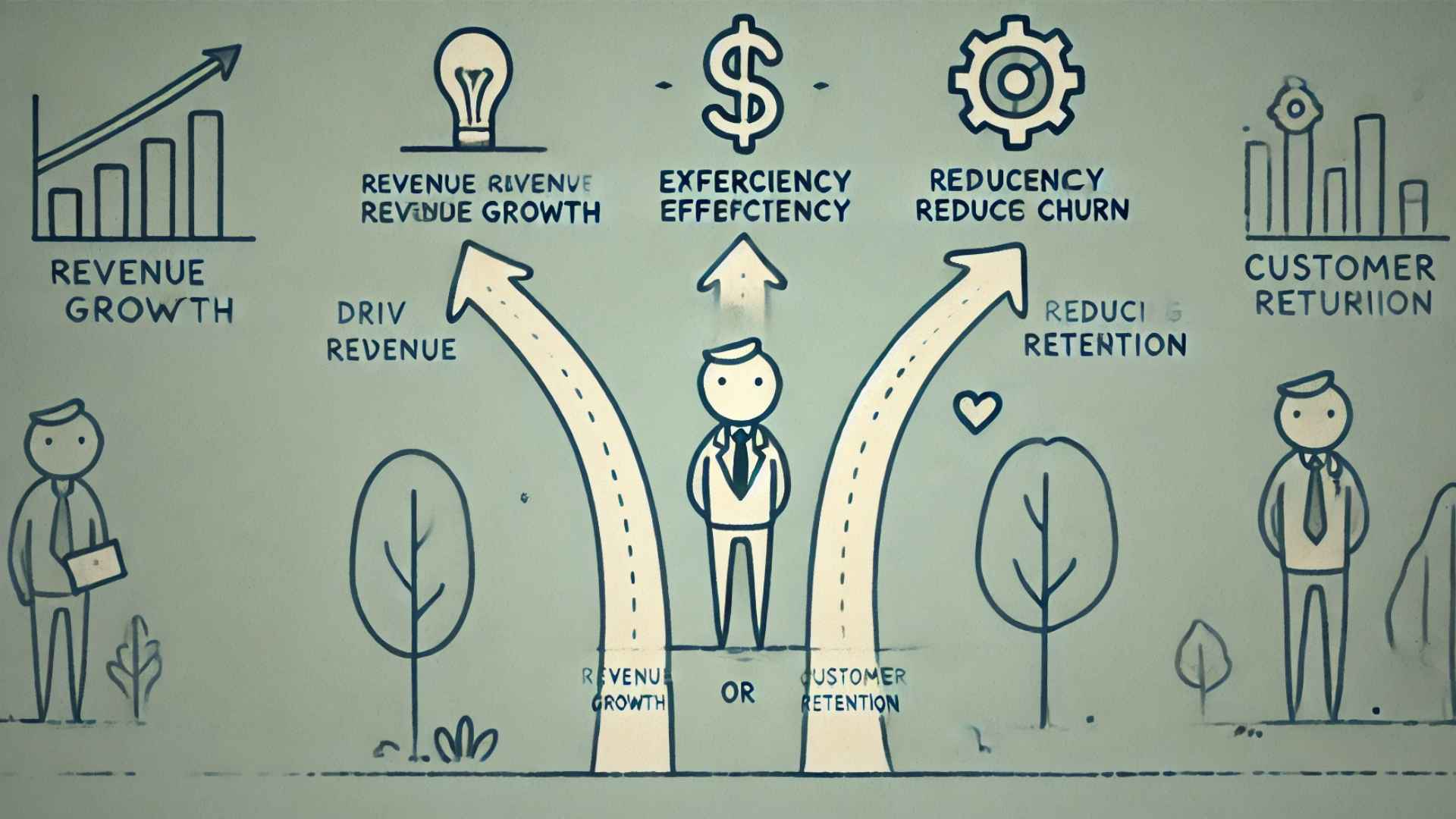
As an executive, your role is to steer the ship, making decisions that directly impact the startup's success. But with countless daily choices, how do you ensure that every action you take is driving the business forward?
It boils down to three fundamental goals:
- Drive Top-Line Revenue Growth
- Improve Margin and Efficiency
- Reduce Churn and Increase Lifetime Value (LTV) of Customers
These three pillars should guide every decision you make.
1. Drive Top-Line Revenue Growth
Every strategy you implement, every product you launch, every market you enter—each of these should be aimed at driving top-line revenue growth. This is the engine that powers your company, fueling expansion, innovation, and sustainability. Whether it’s a short-term sales push or a long-term brand investment, if it doesn’t contribute to revenue growth, it’s worth questioning its value.
2. Improve Margin and Efficiency
Revenue is critical, but how much of it you keep is just as important. Decisions that streamline processes, reduce costs, or enhance productivity directly improve your margins. This could be through better supply chain management, investing in automation, or simply refining internal processes to eliminate waste. By focusing on efficiency, you maximize profitability and create a leaner, more resilient organization.
3. Reduce Churn and Increase Lifetime Value
Customer retention is a key driver of long-term success. Reducing churn and increasing the Lifetime Value (LTV) of customers should be at the heart of your strategy. This means investing in customer satisfaction, enhancing your product or service to meet evolving needs, and creating loyalty programs that keep customers coming back. The more value you provide over time, the stronger your relationship with your customers, which translates into sustained revenue streams.
Applying the Principles
Every decision, from the people you hire to the processes you create, should align with one of these three goals. Some actions may have immediate impacts, like a new sales strategy boosting revenue next quarter. Others, like brand-building efforts, may take longer to bear fruit, but they should still tie back to these core objectives.
If you find yourself working on something that doesn’t clearly connect to driving revenue, improving efficiency, or reducing churn, it’s time to reconsider its place in your strategy. Focus your efforts where they matter most, and ensure that every decision you make contributes to the growth and success of your Startup.
Talk Shop